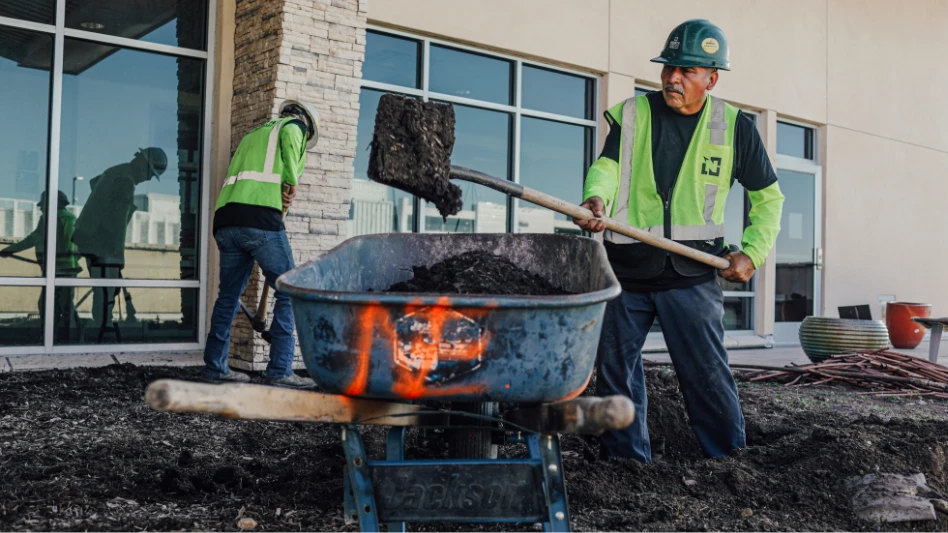
It’s the final touch in any outdoor space, and it’s the first thing customers tend to forget.
Landscape lighting can extend a homeowner’s enjoyment of their outdoor spaces late into the evenings and enhance the property’s best features, but many contractors find that selling it can be a challenge, says Andy Knutsen, owner of Knutsen Landscaping in Pennsylvania. “I get a lot of comments from customers that say they never really thought that much about lighting going in, but how happy they are about the lighting afterward,” Knutsen says.
Sell by example.
To help encourage that initial sale, contractors should give customers a preview of what the lighting will look like on their own property. Beyond showing them property photos or referring them to other addresses for examples, installing a free demo kit on site is by far the most effective sales technique, says Constantine Pergantis, president of Nite Lites in Maryland.
“During the day, if you take marking flags and place them where you are going to light a plant or a tree or a bush, that helps the customer to visualize what five path lights looks like,” Pergantis says. “But of all the ways to be successful at closing a job, the most effective is going out at night and setting up some fixtures. Customers can test drive the system.”
Some contractors are so certain they will land the sale after installing these demo kits that they will set up an entire lighting package and leave it there on timers over a weekend, he says.
“Getting involved in pricing before you even discuss the job is a total waste of time for yourself and for the customer.” Constantine Pergantis, president, Nite Lites
“After three nights of seeing how good that looks, nine times out of 10, the people don’t want you to pull the lights up,” Pergantis says. “They’ve sort of become a captive audience.”
Knutsen has also found that about 90 percent of customers will agree to a lighting job after seeing a demo kit. If the customer was unsure about lighting at the beginning of the job, Knutsen suggests waiting until the project starts coming together to offer to install a few sample lights.
“It’s very common to add the lighting on at this point,” Knutsen says. “It’s also very common that once they see a little portion, they typically add to it.”
Proper position.
Another reason to set lighting at night is to get the aiming and brightness at the right levels. Contractors should look at the way the light comes out of a source and use it effectively.
If a fixture is too low or too bright, it will create hot spots at the base of trees or buildings, says Jan Moyer, landscape lighting designer and author of “The Landscape Lighting Book.”
“There’s so much design that happens in the aiming. It has to be done at night when it’s dark.” – Jan Moyer, landscape designer
“There’s so much design that happens in the aiming. It has to be done at night when it's dark,” Moyer says. “It doesn't take much light to create the effect. What's really more important is to have more fixtures and less wattage so you can show the three-dimensional qualities of a tree or sculpture or water feature.”
Contractors should spend time experimenting with different products to cultivate a deep understanding of landscape lighting. This can help sell a lighting job because the expertise adds a value that homeowners won’t be able to get elsewhere or on their own, Knutsen says. “Landscapers have a good opportunity to artistically design a lighting job whereas an electrician isn’t really in it for the artistic flairs. You want to get lights to enhance what you have back there, but not light up the sky.”
Talk dollars later.

One of the biggest hurdles to selling a lighting job is the cost, and one way not to sell a job is to start with that, Pergantis says.
“Getting involved in pricing before you even discuss the job is a total waste of time for yourself and for the customer,” he says. “You want to sell the effect of an entire job, you’re not selling individual light fixtures.
People can get their head around, ‘it’s $3,000 to light up the yard,’ but telling someone ‘this light fixture installed is $250,’ then they are going to be in somewhat of a defensive mode and you're not going to get anywhere.”
Customers might try to advocate for products that they see at big box stores in an attempt to reduce costs, but contractors should emphasize the benefits of higher-end lines. Knutsen prefers to use CAST Lighting products on his projects because of their quality. The fixtures are designed for seashore climates, so they have sealed connections to prevent loose wires.
They are bronze fixtures with durable metal stakes and tin-coated wires to fend off corrosion. Pitching those details to his customers has ended up being an even greater selling point than Knutsen anticipated. “I walk the customer through all of that and tell them that they may pay more per light, but I also walk them through what it would cost to do it all again five years later,” he says. “That seems to make sense to them to pay more upfront to have something long lasting. With CAST fixtures, 20 years down the road someone will have the same lights and no problem with them.”
Expanding options.
Similarly, LED technology has improved in both quality and ease of installation. From LED panels to integrated circuits and different color temperatures, where there were once a few options on how to light a yard, there are now ten.
With a much wider operating range compared to halogen or HID lamps, LEDs allow contractors to run greater distances without voltage drop problems, Pergantis says.
“There’s less chance of making a mistake because you don’t have the discrepancy in brightness,” he says. “LED is a better mousetrap. You have more tools in your toolbox to make a lighting job so much better.”
Manufacturers have also made LED fixtures more flexible with features like individual fixture dimming and integral modules that can be adjusted right in the field, Moyer says. “We are able to do so many things that we could never do before,” she says. “Having the ability to fine tune the light output and change the beam spread really helps.”
While the cost of each LED fixture may be more expensive, wattage has dropped 70 to 80 percent, Moyer says. “It’s amazing,” she says. “In my opinion, that’s the reason to use LEDs.”

Start with the basics.
Many customers may not want the expense of landscape lighting right away, but if contractors can at least lay conduit through hardscape locations and across plant beds, they’ll have a lot less headaches if they add lighting later, Moyer says.
“It’s a real handicap to add lighting after a landscape has been completed,” she says. “The great thing about landscape lighting is you can start out with a simple system and as long as you have good power distribution, you can keep adding over the years.”
Customers are already looking to extend their living spaces to the outdoors. Landscape lighting is the functional and alluring compliment to those landscaping and hardscaping spaces, Pergantis says. “Whether it’s the swimming pool, new landscaping, a new sidewalk, new gazebo, trellises, fire pits, whatever they are doing outside, the finishing touch is the lighting,” Pergantis says.

Explore the September 2016 Issue
Check out more from this issue and find your next story to read.
Latest from Lawn & Landscape
- Ever-changing landscape of SEO
- Fleetio acquires Auto Integrate, raises $450M in Series D funding
- Davey Tree expands in St. Paul, promotes Ostlie to district manager
- Schill Grounds Management taps 3 for senior leadership roles
- HD Hyundai Construction Equipment North America adds to wheeled excavator lineup
- High maintenance
- From Design to Proposal: Estimating and Rendering Support Services
- PERC adds Joel Stutheit as senior manager of business development






